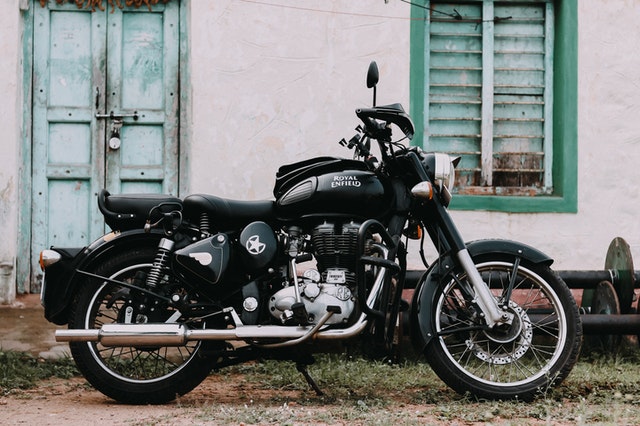Catalytic converters are used in the exhaust system to reduce the harmful emissions.
Automobile emissions significantly decrease when they have converters installed in them.
So, do motorcycles have catalytic converters? Most modern motorcycles contain catalytic converters in their exhaust system. However, not all bikes have catalytic converters. With increasing emission standards worldwide, catalytic converters are bound to be a regular in the motorcycles.
Catalytic converters convert harmful gases coming from the engine into safe gases while leaving the exhaust.
Let’s deep dive into how catalytic converters work, their presence in motorcycles, and tips and guidelines for the maintenance.
What Are Catalytic Converters
Catalytic converters are designed to reduce harmful emissions coming out of the motorcycles.
Gasoline, the fuel used for bikes, consist of hydrocarbons. And if everything goes perfectly, the hydro-carbons reacting with oxygen should give s carbon-di-oxide (CO2) and water (H2O).
However, the combustion in a motorcycle engine is not perfect.
Some of the reactions are incomplete and there will be dirt and impurities mixed in the fuel and in the engine. Because of the heat in the engine, the molecules are created that don’t normally occur.
As a result, harmful gases liken carbon monoxide (CO) and nitrogen oxides (NOx) are released.
These are green house gases that are harmful to the atmosphere. They cause ozone depletion, acid rains, and they are also poisonous.
That’s exactly where catalytic converters fit in.
Catalytic converters are designed to reduce all these harmful emissions coming out from the motorcycles.
The first catalytic converter was patented by the French chemical engineer, Eugene Houdry in 1950.
A catalyst is something that helps a reaction take place.
And a catalyst converter basically consists a catalyst that converts the harmful emissions into safer ones. Hence the name, catalytic converter.
Now, how do these catalysts reduce harmful emissions is detailed out in the next section.
How Catalytic Converters Reduce Harmful Emissions?
So, what’s there in the catalytic converter? There are mainly two components.
- Ceramic
- Rare metals that act as catalysts
Ceramic does not react with anything. But it stays super hot with extremely high temperature so that the reactions can happen inside the converter.
Next, there is rare metals. These are Platinum (Pt), Palladium (Pd), and Rhodium (Rh).
These rare metals are costly and there is 3 to 7 grams of them in a catalytic converter.
These rare metals act as catalysts, both as a reduction catalyst (Pt and Rh) and oxidation catalyst (Pt and Pd).
The reduction catalyst pulls out oxygen from nitrogen oxides to release its as benign Nitrogen.
The oxidation catalyst uses the freed up oxygen to bind them to carbon monoxide (CO) to get carbon dioxide (CO2). In addition, oxidation catalyst oxidizes any unburnt hydrocarbons as well into carbon dioxide and water molecules.
As a result, the harmful gases (CO, NOx and unburnt fuel) is converted into safe gases (CO2, N2, H2O) in the catalytic converter.
The final emissions coming out from the motorcycle is much safer since the harmful emissions are reduced by the converter.
For a detailed understanding of catalytic converters, here is a video for you to check out.
Do Motorcycles Contain Catalytic Converters?
Most modern motorcycles contain catalytic converters in their exhaust system to reduce the harmful emissions.
However, not all motorcycles have catalytic converters in them. But, with the increasing emission standards worldwide, the presence of catalytic converters in the motorcycles have become more and more common occurrence now.
Catalytic converters are seen as one of the best inventions in the field of automobiles to reduce harmful emissions.
The increasing standards for automobile emission across the globe is forcing the motorcycle manufacturers to incorporate the converters in their exhaust systems.
Needless to say, in the coming years, more and more motorcycle models will have catalytic converters installed in their exhaust systems.
Tips To Protect The Catalytic Converter
A defective catalytic converter contributes to air pollution and can impair your engine’s performance.
That’s why, it is essential to keep the catalytic converter in your motorcycle in a good working condition.
Here are some tips to protect your vehicle’s catalytic converter and keep it running in a good working condition.
- Always use unleaded gasoline in your motorcycle. Leaded gasoline will damage the catalytic converter and can produce harmful emissions out to the atmosphere.
- Keep the engine in good running condition. A poorly running engine can cause the catalytic converter to overheat causing damage to the converter or the vehicle. The catalytic converter works in a high temperature environment. An overheated engine can make the temperature soar extremely high and damage the converter.
- If your engine is misfiring, backfiring, stalling, or otherwise not running properly, stop riding and turn off the engine. Have your vehicle serviced as soon as possible.
Fuel Guidelines To Reduce Harmful Gases Emission
In addition to the above maintenance tips, the catalytic converter is sensitive to the type of fuel you use in the motorcycle.
Here are some fuel related guidelines to reduce the harmful gases emission coming out from your motorcycle.
Follow these guidelines to protect catalytic converter along with the engine and the fuel system:
- Use only unleaded gasoline.
- Use recommended octane number. Using lower octane gasoline will result in decreased engine performance.
- Do not use fuels containing a high concentration of alcohol.
- Do not use stale or contaminated gasoline or an oil/gasoline mixture.
- Avoid getting dirt or water in the fuel tank.
